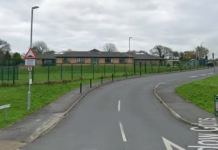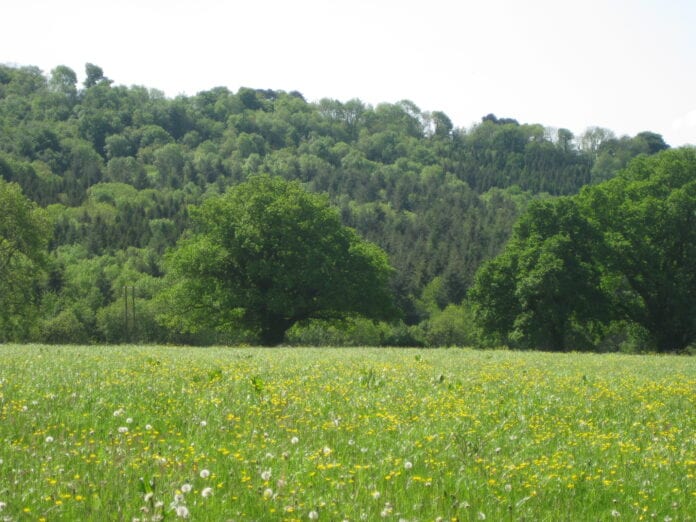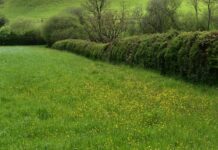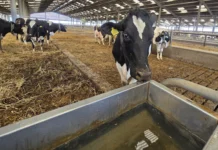Welsh farmers are best placed to identify important on-farm habitats and historical features that will form part of future environmental support schemes, according to an agri-environment expert.
Farming and Wildlife Advisory Group (FWAG) Cymru director Dr Glenda Thomas, a speaker at a Farming Connect webinar on increasing biodiversity on Welsh farms, reckoned most farmers are very good at habitat identification and have good knowledge of where important flora and fauna are located.
“Farmers have a wealth of knowledge about their own farms, I think they are the best people for identifying habitats on their farm, certainly historical features also,” she said.
Farmers share that view as a poll held during the webinar and facilitated by Geraint Jones, Farming Connect’s Forestry Technical Officer, showed an overwhelming majority believed that Welsh Government should ask farmers to complete their own environmental biodiversity farm plans.
Many of the farmers that responded to the poll believed they were in a position to increase the biodiversity value on their farms and all but two who responded believed that good biodiversity value and high environmental standards on farms go hand in hand with food production.
The majority described the level of work they were currently doing to support biodiversity on their farms as ‘moderate’, suggesting that funding is the main obstacle to doing more.
Farming Connect in conjunction with FWAG Cymru will undertake environmental audits on three of its demonstration sites this spring, reflecting all sectors of agriculture.
Surveys with an ecological focus will be used to identify flora and fauna species.
Dr Thomas said Wales historically had exemplar environmental schemes, citing Tir Gofal and Tir Cymen as excellent examples of these, while Tir Cynnal and its focus on nutrient management had a valuable role in the good management of manures and slurries, particularly on dairy and beef farms.
“Tir Cynnal’s continuation and development would have probably averted the requirement for the NVZ regulations now looming,” she said.
“In terms of habitat identification and the importance of habitat management, I think we were way ahead in the days of Tir Gofal and Tir Cymen,” she said.
“There was a greater emphasis on identifying habitats and species carefully and mapping the farm thoroughly and there was also a big focus on historical features.
“I think we have lost our way on that a bit in Glastir because I feel we have focused too much on paperwork as opposed to what is going on practically on farms to manage and enhance habitats.”
Dr Thomas hopes that historic features will play a more important role in future schemes.
“They have an important heritage value and can be habitats in their own right,” she said.
“The magnificent veteran trees that we have on farms deserve to be noted as historical features and perhaps often overlooked features such as sheep passageways through stone walls, stone stiles, stone gate posts and others.”
In terms of the management of habitats, Dr Thomas said it was extremely important to appreciate the role stock have in this.
“Sheep are much maligned but excel as management tools for some habitats,” she suggested.
“Cattle are much appreciated in terms of habitat management with their grazing method valuable in the control of coarser vegetation so allowing more delicate plants to thrive.”
Habitats can be managed by mechanical and chemical means too but this presented a dilemma, she said.
“It is interesting to ponder this because there is an emphasis on the carbon footprint of farming and reducing it so it will be interesting to see how habitat management develops in future schemes in light of that.”
The crop management and animal husbandry skills of farmers must not be overlooked, Dr Thomas added.
“These are much underestimated and if we lose those we are not going to regain them overnight.”
She believes that in future there will be a high level of landscape-scale habitat management, with farmers working together as a group, as had been the case with the Glastir Common Land Scheme, Nature Fund and the Sustainable Management Scheme.
Farming Connect, which is delivered by Menter a Busnes and Lantra, has received funding through the Welsh Government Rural Communities – Rural Development Programme 2014-2020, which is funded by the European Agricultural Fund for Rural Development and the Welsh Government.

| [donate]
| Help keep news FREE for our readersSupporting your local community newspaper/online news outlet is crucial now more than ever. If you believe in independent journalism,then consider making a valuable contribution by making a one-time or monthly donation. We operate in rural areas where providing unbiased news can be challenging. |


















